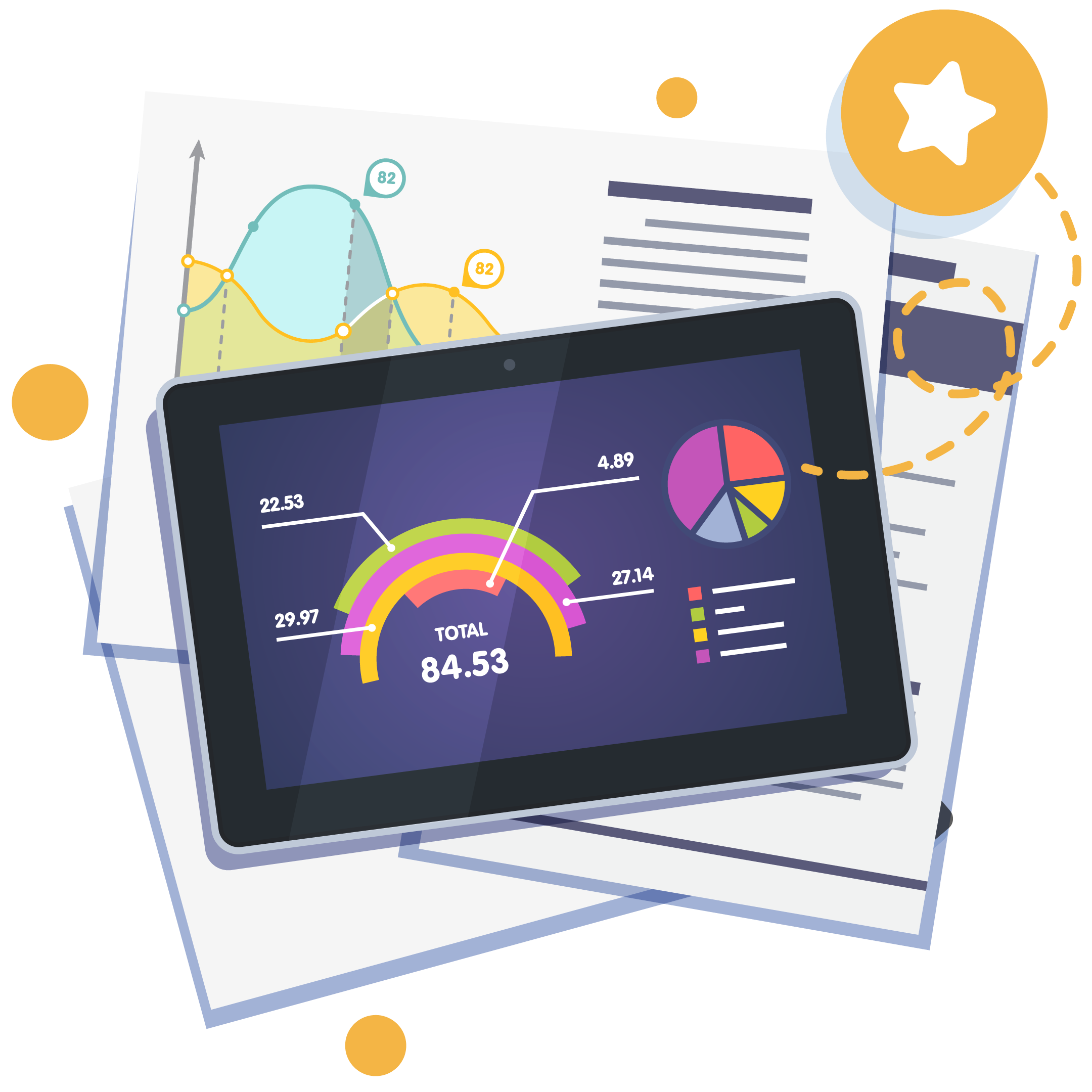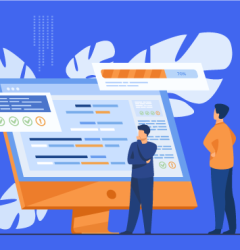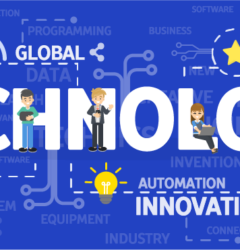01 Dec

Digital transformation is an exciting concept that can revolutionize how we do business and interact with customers. Many organizations have already embraced digital transformation and are seeing great success.
In this article, we will explore 11 real-world examples of digital transformation that have taken place in 2023. From large corporations to small start-ups, these businesses have all adopted innovative strategies to leverage technology to their advantage and seize new opportunities. We’ll look at the challenges they faced, how they overcame them, and what their successes can teach us about the power of digital transformation in the future.
What is Digital Transformation?
Digital transformation is the procedure of using technology to change and drastically improve how businesses operate. It involves integrating digital technology into all business areas, including strategy, operations, marketing, and customer service. Digital transformation has become a crucial part of any modern organization’s success.
This type of transformation can be used to enhance customer experience, optimize internal processes, increase efficiency and productivity, develop new services and products, and create better strategies for growth. Digital transformation helps companies stay competitive in an ever-changing market landscape by providing more efficient solutions for their customers’ needs. It also allows them to stay ahead of their competitors by tapping into new opportunities that come with digital technologies.
Digital transformation is not just a buzzword any longer – it’s necessary for any business that wants to succeed in today’s highly competitive world. Companies must embrace the changes brought about by digital transformation to remain relevant and thriving in the future.
Benefits of Digital Transformation
Digital transformation brings forth a multitude of benefits across various aspects of business operations and customer interactions:
- Enhanced Efficiency: Automation and digital tools streamline processes, reducing manual efforts and operational costs while boosting overall efficiency.
- Improved Customer Experience: Implementing digital solutions enables personalized interactions, seamless transactions, and quicker responses, enhancing customer satisfaction.
- Increased Agility: Embracing digital technologies facilitates faster adaptation to market changes, enabling businesses to remain competitive and agile in evolving landscapes.
- Data-Driven Decision-Making: Access to comprehensive data and analytics empowers informed decision-making, leading to more strategic and impactful business choices.
- Innovation Opportunities: Embracing digital transformation fosters an environment conducive to innovation, enabling the development of new products/services and market offerings.
- Scalability and Growth: Digital technologies provide scalable solutions, allowing businesses to expand their operations and reach new markets more efficiently.
- Enhanced Collaboration: Digital tools facilitate seamless collaboration among teams and stakeholders, regardless of geographical barriers, fostering better teamwork and productivity.
- Improved Security Measures: Modern digital transformations incorporate robust security protocols to safeguard data, protecting businesses from cyber threats and breaches.
Overall, digital transformation yields substantial benefits, enabling organizations to evolve, remain competitive, and thrive in an increasingly digital-centric world.
11 Real-world Examples of Digital Transformation
In 2023, companies across various sectors will continue implementing digital transformation strategies to remain competitive in the ever-evolving marketplace. Here are five real-world big brand examples of digital transformation:
1. The digital transformation of Netflix
Netflix is our best option for keeping up with the latest movies & television shows that everyone talks about. Their mission is to entertain the world by hosting movies, TV shows, and documentaries.
The company is currently valued at $149 billion, and much of its success can be attributed to its ability to anticipate the future and transform.
To improve customer experience and satisfaction, Netflix CEO Reed Hastings approached Blockbuster with an offer. Initially, Blockbuster was a video rental service, but by 2007, technology was advancing, and people were becoming more comfortable using it.
As a result of their online viewing system, Netflix was able to address the concerns customers had with Blockbuster, such as late fees, and they were successfully able to deliver new value to their customers through a Digital Transformation, as well as change their buying habits and the way they watch movies in general.
2. NIKE’s Digital Transformation through SNKRS App
NIKE, a leading brand in sports footwear, is now focusing on mobile devices. Using machine learning and recommendation algorithms, it uses advanced technologies.
One of the company’s mobile applications helps choose the best shoe based on a leg scan.
A 13-point map of the feet is created by scanning the feet. In addition, the application provides the company with valuable information for making future footwear projects.
Its NIKE + loyalty program, which rewards its most active members, is one of the company’s most important projects. Sales increased significantly in Japan after the solution was implemented, and the Nike SNKRS application also recorded a 100% increase in sales.
In NIKE’s case, innovation has also led to a modernization of internal company operations. Design teams can work more quickly and efficiently by digitizing 6,000-footwear materials, and this directly affects response time to market demands.
Also Read: Crafting A Winning Digital Transformation Strategy: 7 Key Components
3. Starbucks Using AI Technology to Enhance Customer Satisfaction
Starbucks, a well-known coffee chain with over 32,000 stores in 80 countries, is famous to all coffee lovers. Unsurprisingly, Starbucks recognized the benefits of introducing a digital transformation and introduced the ‘Digital Flywheel’ in 2017.
The initiative focused on transforming rewards, personalization, payments, and ordering based on customer feedback. Cloud-based platforms improved Starbucks’ ability to offer tips and order products while managing inventory and production.
In addition to technology, Starbucks has integrated Artificial Intelligence into its app, allowing them to personalize its product offerings and offer rewards based on consumer preferences. According to Starbucks’ CEO, he wants to continue harvesting new technologies, which is why Starbucks is the world’s most famous coffee brand.

4. AUDI’s Digital Showroom
It is hard to find a more analog industry than the automotive one. Despite this, AUDI has decided to enter the digital world with its new services and is now one of the most successful examples of digital transformation.
Under the name Audi City, the company introduced an innovative showroom concept in 2012. Rather than traditional showrooms with many exhibited cars, micro-showrooms in city centers let users explore the entire catalog of the brand’s cars.
Discovering and buying cars can be done while wandering around city center stores, making the experience enjoyable and accessible for everyone. Audi City is where forums and exhibitions are held in the evenings, further enhancing the brand’s position.
Advanced car configuration is possible on interactive screens in stores using full-size car images. Using your tablet to look inside the car, watch it move, and hear the engine sound is possible.
Compared to traditional showrooms, sales increased by 60% in Audi City, where only four cars are permanently exhibited (savings for Audi!).

5. Adobe’s Digital Transformation
Adobe was founded in 1982 and is an American software company. Photoshop (for editing images), Adobe Acrobat Reader (for viewing and editing PDF files), or Illustrator (for creating vector-based illustrations) are probably some of their flagship products.
In the past, Adobe sold boxed software under the name Adobe Systems. During the 2008 crisis, the company made a risky move from a license-based model to a subscription-based model. Their service offering was redefined and divided into three cloud-based solutions: Creative Cloud, Document Cloud, and Experience Cloud. As a result, Adobe became a cloud company that offers software-as-a-service (SaaS).
They also acquired an e-commerce platform (Magento) and a web analytics company (Omniture) as part of their digital transformation. Furthermore, the company realized it could achieve its goals only if it had the best talent. Adobe invests in employee-focused work cultures, benefits, and employer branding to ensure employee satisfaction. A data-driven operation model was also employed to monitor the company’s health.
Their digital transformation encompassed many elements: a new business model (SaaS), new technology (cloud), a new HR management strategy, data-driven operations, etc. Adobe’s example demonstrates the following two points:
- A business can gain a substantial competitive advantage through digital transformation.
- The change must affect everyone in the organization and redefine how things are done.
6. Airbnb Disrupting Hospitality with a Sharing Economy Platform
Imagine a world where your next adventure isn’t confined to cookie-cutter hotels but a symphony of unique spaces awaiting your exploration. This is the magic of Airbnb’s digital transformation. By defying traditional norms, Airbnb has turned the hospitality industry on its head. With a few clicks, travelers can unlock a universe of one-of-a-kind accommodations hosted by locals who open their doors to share their spaces and stories.
Gone are the days of mundane booking processes. Airbnb’s sleek digital interfaces take you on a journey from dreaming to experiencing. The platform thrives on transparency, fueled by user reviews that breathe life into each stay. The once-anonymous hosts now become your virtual tour guides, offering insider tips and creating bonds that stretch beyond geographical boundaries.
Security is paramount in this new era of travel, and Airbnb’s secure payment systems provide both hosts and guests peace of mind. This trust, combined with a gamut of accommodations, from treehouses to castles, fosters a sense of belonging that’s unmatched in conventional lodging.
In rewriting the rules of hospitality, Airbnb’s transformation is not just digital; it’s a movement that champions connection, adventure, and a tapestry of human experiences.
7. Amazon Reinventing Retail with Data and Automation
Picture a bookstore evolving into a digital behemoth that can summon your heart’s desires with a single click. Enter Amazon, the epitome of retail transformation that has rewritten the story of shopping. Their journey began with books, but their destination was a global marketplace that transcends borders and time zones.
At the core of Amazon’s transformation is a symphony of data. They’ve harnessed the power of analytics to understand customers better than they understand themselves. With AI-driven recommendations, they curate personalized shopping experiences that leave traditional retail in the dust.
But Amazon’s impact doesn’t stop at the screen; it echoes in the warehouses where algorithms orchestrate an intricate dance of products, ensuring quick deliveries that defy imagination. Supply chain optimization isn’t just a phrase; it’s the pulse that keeps this retail titan ticking.
Automation is the heartbeat of Amazon’s revolution. Behind the scenes, robots navigate the aisles, and drones prepare for takeoff, making doorstep deliveries a reality straight out of science fiction.
And the customer experience? It’s the gold standard. From easy returns to seamless payments, Amazon has rewritten the rulebook, turning shopping into an adventure rather than a chore.
In the digital age, Amazon isn’t just a retailer; it’s a trailblazer that’s redefined convenience, speed, and the very essence of how we shop and live.
Also Read: From Paper to Digital: 9 Simple Steps for a Successful Digital Procurement Strategy
Some examples of Quixy helping businesses in Digital Transformation
8. Jatagan Security with 50% Higher Productivity
Jatagan Security, based in Sacramento, CA, is known for going above and beyond to provide innovative and cost-efficient options and conquer tough challenges like limited power and communication lines.
As Jatagan Security continued to grow, its manual inventory management system faced a major challenge – scalability. Managing larger inventories, multiple locations, and surging order volumes manually led to inefficiencies and costly errors. They needed a solution to maintain their stellar service. Jatagan Security decided to embrace innovation by choosing Quixy. The no-code platform allowed them to create a tailored inventory management system that automated processes like inventory tracking, order management, and more. It eliminated manual work and boosted efficiency. Learn More.
9. Revolutionizing Inspections at HMWSSB
Imagine a scenario where everything related to inspections is done manually using Excel sheets and documents. For the executives at HMWSSB, this was a daily struggle. They faced challenges in validating information and keeping track of the status of thousands of Customer Account Numbers (CANs). But then, they discovered Quixy, and things started to change. Under HMWSSB’s jurisdiction, there are nearly 10 Lakh water and sewerage connection CANs, each requiring periodic inspection. The records related to payments, customer details, arrears, and more needed to be meticulously tracked. Unfortunately, this was being done using Excel and manual sheets, which led to issues with data accuracy and real-time updates.
Thanks to Quixy’s no-code capabilities and problem-solving expertise, HMWSSB achieved a digital transformation within 15 days. They built an automated inspection solution that simplified their entire process. Learn More.
10. Fenesta brings down TAT
Fenesta’s strength lies in its ability to design windows and doors that can withstand India’s challenging climate, thanks to its in-house manufacturing of uPVC blend and profiles. Fenesta operates in over 327 cities through various channels, including sales offices, factories, studios, and partner showrooms, supported by a robust sales team of 500+ executives. As their sales orders increased, processing them in a timely manner became a daunting task. The existing manual system, relying on emails and reminders, led to errors and lost requests buried in email threads. Lack of process control and standardization affected customer interactions and satisfaction with the sales team.
The entire feasibility process was automated on Quixy. The Quixy-powered workflow brought control and transparency, boosting sales team satisfaction. Manual reminders and follow-ups became history, as Quixy ensured timely notifications. Mandatory form fields improved data accuracy, and built-in business rule validations ensured requests were routed correctly. Determining TAT was simplified, and audit trails were effortlessly compiled with timestamped actions. Learn more.
11. Adani Green’s Digital Transformation Journey
Adani Green, a major player in India’s energy sector, handles over 1400 purchase requisitions (PR) every month. Their challenge? An outdated process relies on a mix of emails, Excel, SAP, and manual efforts to track the PR to PO (Purchase Order) process. It was time-consuming, error-prone, and impacted turnaround times. That’s when Quixy stepped in to drive their digital transformation.
PRs poured in from different businesses, each with its unique nature and criticality. The existing methods, including emails, Excel, SAP, and SAP Ariba, made it tough to track PR statuses. Mismanagement and lack of data visibility led to endless follow-ups and project delays, affecting the business’s project life cycle. Adani Green sought a solution to reduce errors, and delays, and improve data transparency. Quixy’s no-code capabilities made designing a comprehensive workflow for end-to-end purchase requisition tracking possible in just a month. Learn More.
Conclusion
Digital transformation is quickly becoming an integral part of businesses’ success in the 21st century. As technology advances and companies become more reliant on automation and data analytics, businesses can benefit greatly from staying current with the latest trends and technologies. Businesses can stay competitive while minimizing risks by leveraging emerging technologies such as cloud computing, AI, and big data.
In 2023, digital transformation will increasingly be used by businesses to automate processes, increase efficiency, and improve customer service. Companies can use automation and AI to their advantage to make decisions faster and more precisely. Businesses that take advantage of the latest technological advancements will be well-positioned for flourishing success in the future.
Digital transformation provides a host of benefits for businesses as we move into 2023. Companies that keep up with emerging technologies and best practices for using them will give themselves a competitive edge over those that don’t. It’s clear that this modernization trend is here to stay – so companies need to start exploring digital transformation now if they want to remain successful in the coming years.
Frequently Asked Questions(FAQs)
Q. What are the 4 main areas of digital transformation?
Customer Experience: Improving interactions and engagement with customers through digital channels.
Operational Efficiency: Streamlining internal processes and workflows with digital tools.
Business Models: Innovating and adapting business models to leverage digital technologies.
Data and Analytics: Utilizing data-driven insights for informed decision-making.
Q. What are some examples of Digital Innovation?
Artificial Intelligence (AI) for personalized customer recommendations.
Internet of Things (IoT) devices that enhance automation and data collection.
Augmented Reality (AR) for immersive customer experiences.
Q. What is a simple example of digitization?
A simple example of digitization is converting physical documents into electronic formats like scanning paper documents and saving them as digital files.
Q. What is an example of a transformation process?
An example of a transformation process is a traditional brick-and-mortar retail store transitioning to an e-commerce platform to reach a wider audience and improve sales.
Q. What are the 10 innovative technologies?
Artificial Intelligence (AI)
Internet of Things (IoT)
Blockchain
Virtual Reality (VR)
Augmented Reality (AR)
5G Technology
Autonomous Vehicles
Biometric Authentication
Nanotechnology
Quantum Computing















